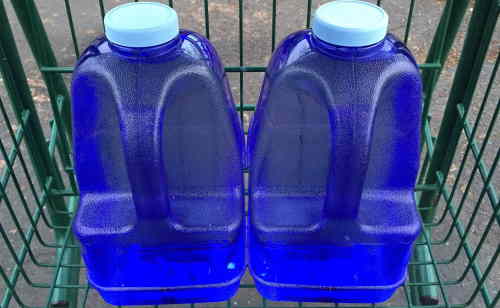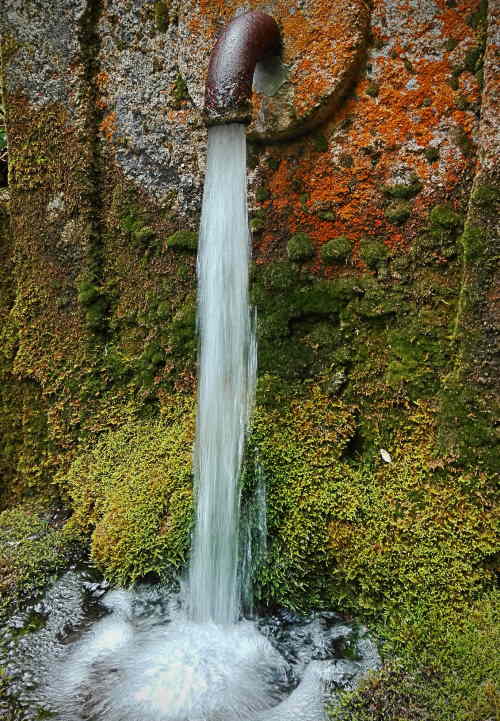Let me explain the difference between spring water vs purified water, and make a short comparison from the in-detail analysis. Water purity is a growing concern for the majority of Americans and a topic that many people are interested in. Lately, many consumers are beginning to wonder if their water is safe to drink. With that in mind, I’ll compare natural spring water with purified water that many people consuming every day.
More and more people are making the transition from tap to bottle water. Consumers are likely familiar with prominent phrases like “purified water”, or “spring water” not knowing what exactly do they mean.
While distinctions between “purified water” and “spring water” may go unnoticed by some, there certainly is a difference between them. Let me take a closer look at these options, and make a clear distinction between them.
Spring vs Purified Water
Before continuing, to make it clear: both, spring water and purified water can come from the same source. However, purified water undergoes a more rigorous purification process.
The choice between the two mainly depends on personal preference. Some people simply love the taste that spring water has. Others prefer purified water. Purified water has been clarified through high-grade water purification systems installed in homes or large-scale businesses.
Purified Water Explained

Most of the bottled water sold in the U.S. claims to be “purified water”.
Surprisingly, this isn’t just a marketing ploy that makes the water seem cleaner, fresher, or more pristine. The fact is, companies can’t legally sell their product as “purified water” until they can prove that their product is actually purified. Overall impurity level has to be below 10 parts per million, to be legally sold.
Parts per million (or ppm) is a metric commonly used to measure the concentration of something in a liquid. In this case, in the case of drinking water, 1ppm is equivalent to one milligram of particles in one liter of water.
This means that purified waters are often-times subject to intensive treatment processes and filtration systems to remove particles or substances that may restrict their product from obtaining “purified status”. If these requirements aren’t set, the product can’t go on the U.S. market.
Spring Water Explained

The spring water isn’t labeled “spring” specifically. Other common names for spring water include well water, groundwater, or artesian water. All these phrases refer to the same type of product.
According to the EPA, for water to be considered “spring” water, it must originate from an underground aquifer.
Many people consider that the natural filtration process of spring water makes better-tasting water due to the presence of naturally occurring minerals. Before distribution, spring water is often treated using a filtration method that preserves the mineral content while removing microbes and other impurities.
The real advantage of spring water is that it comes from a “pure” source. We assume that man-made contaminants are low and natural minerals are abundant.
Usually, that is correct. The fact is: while spring waters may have relatively high ppm levels, these “excess” particles are typically natural compounds from the underground aquifers. Many people believe that these minerals are beneficial for health.
Unlike spring water, purified water is highly-treated drinking water that doesn’t contain the chemical compounds that we can find in the public water supply.
According to FDA guidelines, spring water is derived from an underground formation from which water flows naturally to the surface of the earth at an identified location. It may be collected at the spring or through a borehole, tapping the underground formation that feeds the spring.
NOTE: It’s important to note that spring water is not required to meet the ppm standards that apply to purified waters. Hovewer, both, spring water and purified water are FDA and EPA-regulated.
What’s the difference?
Purified water, according to the U.S. Food and Drug Administration, is “produced by distillation, deionization, reverse osmosis or other suitable processes” and also may be called “demineralized water, deionized water, distilled water or reverse osmosis water.”
Just like all bottled water, spring water has to meet FDA guidelines. The EPA regulates public drinking water (called tap water), while the FDA regulates bottled drinking water.
Compared to purified water, spring water goes through very little distillation. Before it goes to the market, the goal is to keep the minerals that naturally occur. Many people love drinking spring water because of its taste.
The better water is?
I can’t just say that one drinking water is better than another one. Actually, it is hard to say that to anyone. There’s no real answer to this question.
What many consider “better” water, largely depends on what they consider to be the most important factors. The real truth about the water is the source. If you’re unsure about the quality of the springs, from which the water is taken, you should opt for purified water. I think this applies to those who travel abroad as well.
Those that prefer spring water tend to like its natural minerals. They give a nice taste to the water. These natural minerals can’t be found in purified water.
While both types of water are perfectly fit to drink, spring water has a few benefits that purified water lacks. Due to the presence of naturally occurring minerals that are removed during the purification process, purified water doesn’t have any taste. The bottom line is that both purified water and spring water are considered safe to drink (and in fact, well within the confines of “safe” drinking water) according to the EPA. Depending on the quality of your local tap water, both spring and purified waters are likely purer than water from the faucet.
If you’re using tap water, check for the Pur water filter.